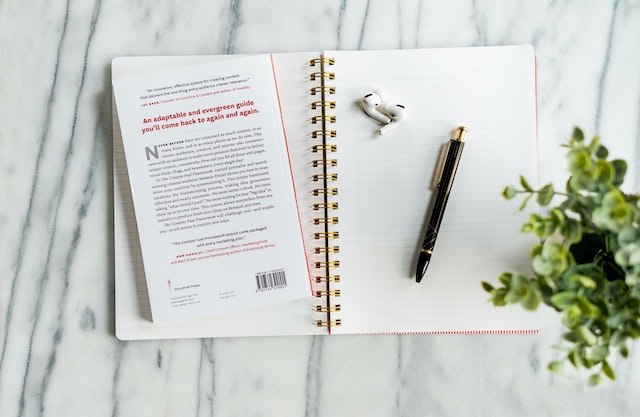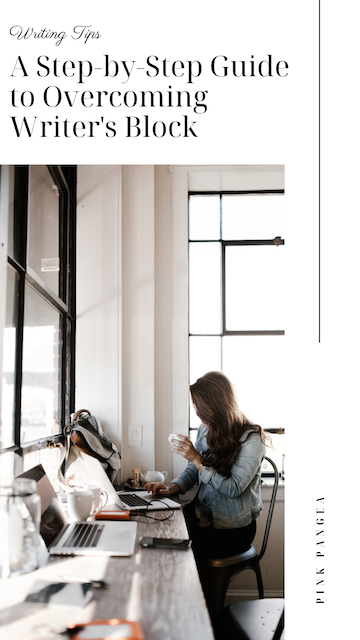A Step-by-Step Guide to Overcoming Writer’s Block

Five years ago, I chose to be a writer for a living. I was paid to spruce up magazines with smart, witty, poetic and concise copy, to a deadline. Then, as my experience advanced, my copy grew sharper, and freelance projects started pouring in. My deadlines started to stack up, too. In a short year, I learned that writer’s block is not an acceptable excuse for missing a deadline or procrastinating to the point of an anxiety attack. Now, I have the key to getting over the block at those times when I absolutely must write. Be it a paying article (bless you!) or blog post with a self-imposed and frustratingly fluid deadline, these tips should help your story see the light of day. Here’s my guide to overcoming writer’s block.
A Step-by-Step Guide to Overcoming Writer’s Block
The force of deadline
Let’s start by clarifying that not every project has a deadline. And if yours doesn’t, you have to make one. Here’s why. Almost every story has an expiration date: wait too long, and you’ll be outpaced and “out-written”. Another reason is fickle human nature: one of the saddest things that can happen to a story is the author losing interest in it. Do yourself a favor and motivate yourself with a hard deadline.
Set a half-deadline
Once you have established the deadline, count three to five days back and circle that date. This is the day to get your thoughts together and organized, in order to launch the subconscious writing process. The trick is to make it short and sweet, but provide your brain with enough input and direction to start creating.
Fit writing in between other things
Even if you don’t know it, you have plenty of fifteen-minute stretches to spare every day, like the time between finishing dinner and sitting down to a favorite TV show, or between your arrival at the gym and the start of the class. For your half-deadline, start with something simple, like a plan or a list.
Just throw your main messages on paper and try to create some logic so your mind will focus and begin processing. It is a sprint: giving it your all, you build a foundation for the future story, but don’t spend more than a quarter hour on this step. But be warned: you may even write half the story right there and then.
Make a plan, then let it go
Whether you do it during your half-deadline or a day after, I cannot overemphasise how much adding another layer of structure will help your mind, and how much stress it will relieve. I like writing plans on paper; looking away from the screen freshens my perspective. After the final period, don’t ponder.
Allow your mind to wander freely, go for a walk, workout, garden, cook. When I follow these steps, a couple of days later inspiration usually hits me hard, often in the shower.
Sign up for a FREE online writing workshop here.
Find your place of inspiration
When it’s finally time to write, spoil your inner muse. Pour it a fresh cup of green tea and kick off your shoes if you are stuck in an office, or head over to your favorite coffee shop. Inspiration is a reflex that can be trained, so figure out or create your personal triggers and rituals, and use them wisely. I find music in my headphones distracting and much prefer to keep my ears open to a coffee shop hum or an office buzz.
Pour it out
Now, to the writing. The first thing you write will always be a draft, and there is no need to stress over or fear a draft. On your first go, there are no rules or judgement. I think of my writing ability as a faucet: anxiety and perfectionism don’t help my creative output; if anything, they only tighten the nozzle. So start twisting in the opposite direction and let it pour. As for the blank page scare? Just put a word—any word—on it.
Just put a word—any word—on it.
Edit yourself
While the first draft is all about you, once it’s complete it becomes about your readers (and often your editor.) I recommend giving it a day, or at least a few hours, “to rest”. After that, start editing. How our minds speak and what is fun to read are two different things.
Look at your prose with a critical eye: get rid of words used for the sake of embellishment, slice sentences, straighten logic, and simplify everything. Finally, submit your draft early if you can—exceeding expectation is never a bad thing!
The secret to never struggling with writer’s block again is to break the daunting process or writing into bite-size morsels, and to savor each one.
A Step-by-Step Guide to Overcoming Writer’s Block photo credits by Unsplash.










